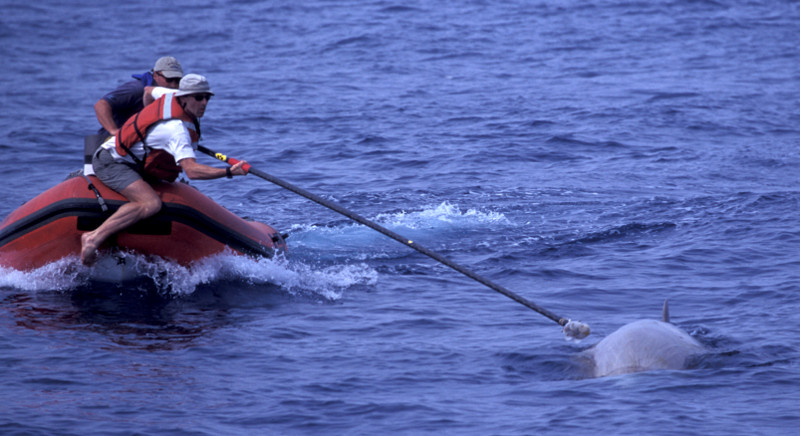SMRU. School of Biology . University of St Andrews
Welcome to the SOUNDTAG Lab at the University of St. Andrews.
The ocean is far from a quiet place. Choruses of fish and snapping shrimp combine with clicks from sperm whales and humpback songs to make a rich and varied acoustic landscape. But humans are changing how it sounds underwater. Sounds from distant shipping can be heard almost anywhere in the world while booms from oil exploration and off-shore construction are becoming increasingly common. Our objective is to study how animals use and cope with sound underwater. To this end, we develop and deploy miniature sound and movement recording tags, called DTAGs, to sample the sound field experienced by marine animals and how they respond to it. One of our main interests is in echolocating whales such as sperm whales, pilot whales and beaked whales. These animals dive to depths of 1 km or more where it is too dark to see prey and so they rely on sound to find food.

Here is a video about DTAGs from students’ perspective. It is created by Rob Patchett, Sam Wilson, Erik Anderson, Sean Cragg and Cate Kelly as part of a second year biology group work assignment.
